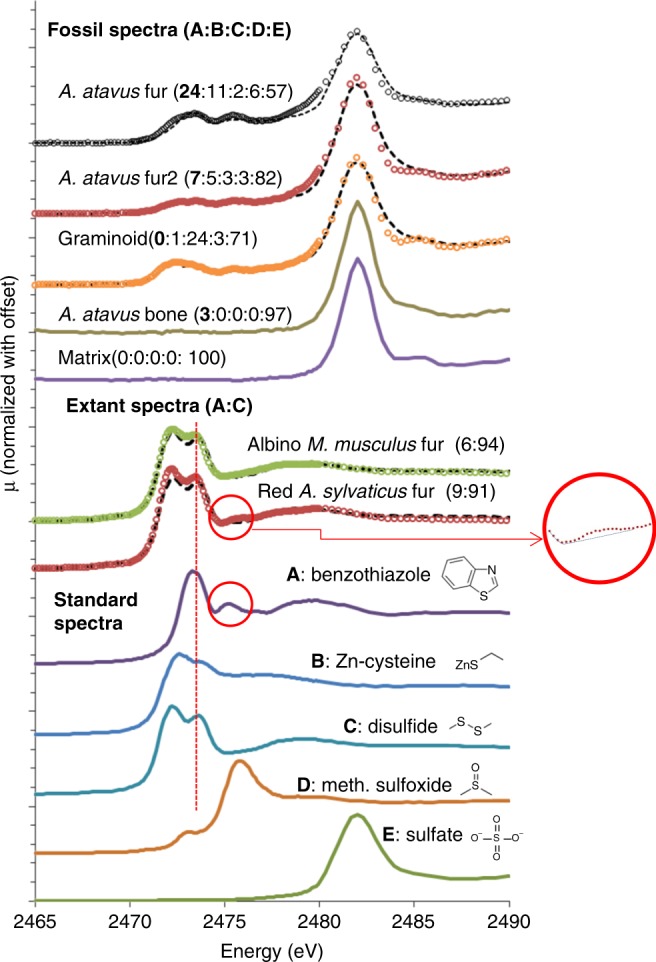Fig. 3.

Sulfur K-edge XANES data for standard, extant, and fossil specimens. The sulfur standards, A benzothiazole, a benzosulfur compound and a key component of pheomelanin, B Zn–cysteine, a terminal S organic functional group where we have substituted Zn for H as the exchangeable cation to simulate the configuration expected in pheomelanin tissue or its residue, C oxidized glutathione (disulfide) comparator for the dominant sulfur component in keratin, D methionine sulfoxide, an oxidized form of organic sulfur, and E Zn sulfate. The two extant mice spectra are presented along with linear combination fits (dashed lines) computed as a binary benzothiazole/disulfide system. The red circles highlight the resonance which is strong in the benzothiazole standard and which is resolvable in the red fur. The dashed vertical line furthermore indicates energy where the dominant benzothiazole peak is coincident with the second oscillation in the bifurcated disulfide peak to subtly shift the intensity of that second peak relative to the first—a shift that is discernible in the red fur but not the albino fur. Normalized spectra from the fossil are presented along with LCF fits calculated using all five standards as possible components (ratios of each standard contribution to the fits are given as a set of five numbers in parentheses). Because the fossil bone and sedimentary matrix are almost pure sulfate, for clarity fits have been omitted. Fits are shown as dashed lines for the three soft tissue analyses
